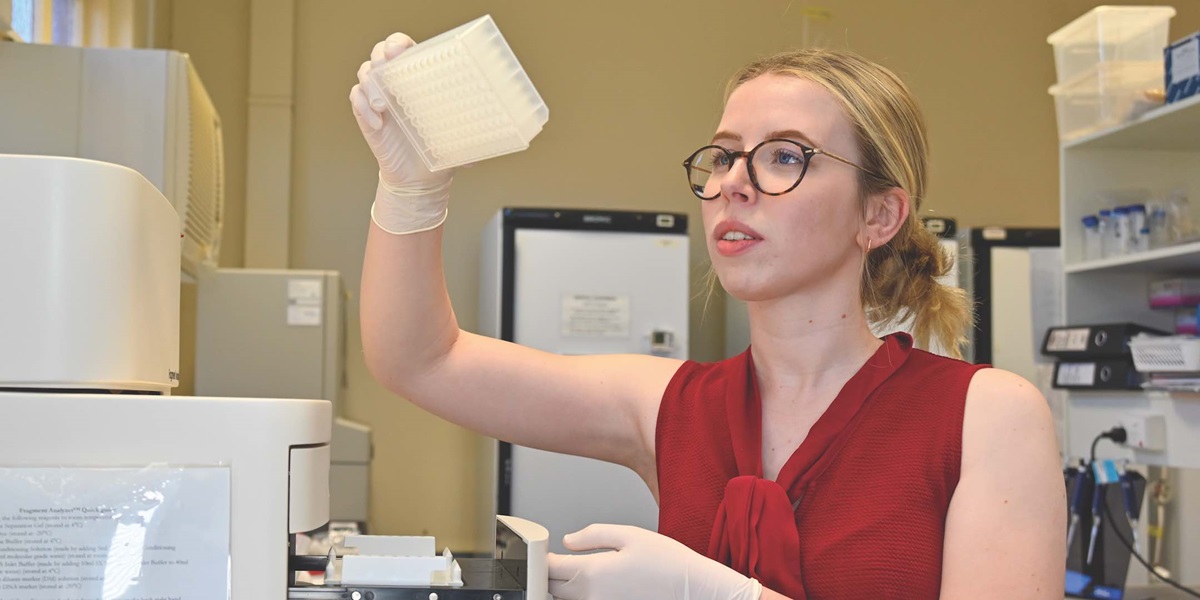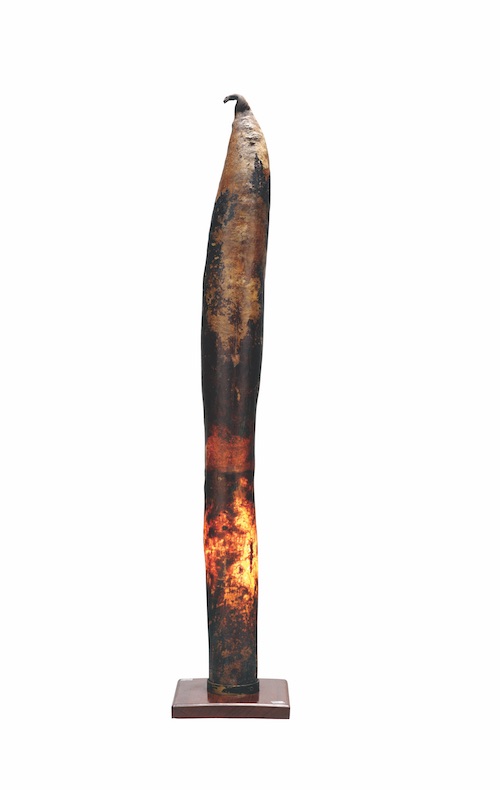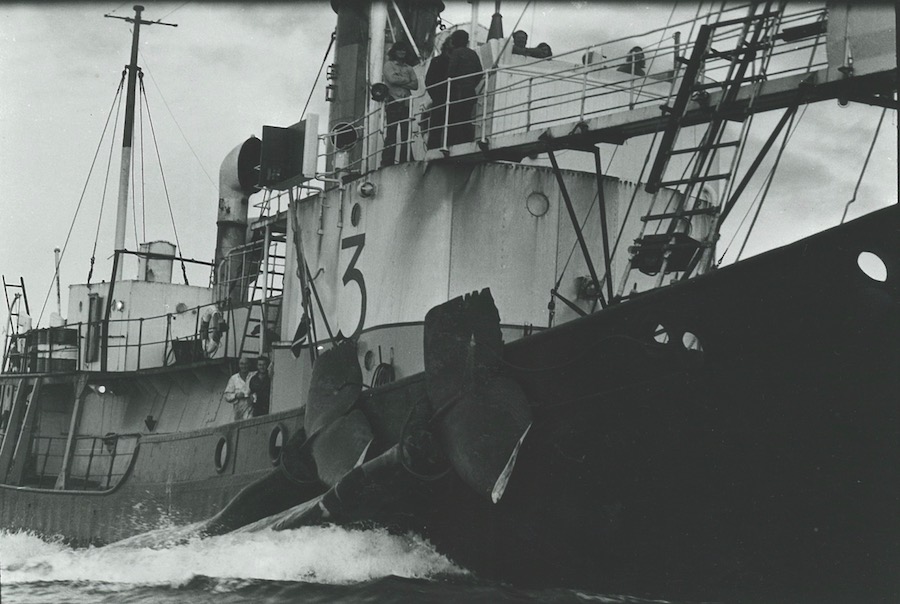
Museums across Australia house many unique and fascinating artefacts that reflect past societies and cultures. Until the invention of plastic and synthetic materials, many everyday items such as tools, clothing, jewellery and furniture were made using parts from animals and plants. Identifying the source of the organic material used in these items is important in shaping our understanding of past interactions between different cultures and their environment.
Often the source of these organic materials is easy to identify: for example, kāhu kiwi (kiwi feather cloak), which was worn by Māori people of New Zealand, consists of kiwi feathers woven into dyed muka (flax fibre). When the material is heavily modified or the source organism is obscure, however, this can be much more challenging. Recent advances in ancient DNA techniques have provided a powerful new tool for researchers in their hunt for answers, which often leads to surprising discoveries. For example, DNA analysis of an 18th-century garment’s corset boning – made from whale baleen – revealed the existence of an extinct, previously undescribed, North Atlantic lineage of right whales (Eubalaena glacialis). A similar case is that of a mysterious artefact whose age and origin baffled Australian National Maritime Museum staff for more than 10 years.

A sad artefact of 20th-century whaling, this lamp is now known to have been made from a sperm whale harvested between the 1950s and 1970s. National Maritime Collection 00042380
In 2006, the unusual artefact was anonymously donated to the museum. Researchers quickly concluded that it was an electric lamp, as it was fitted with a light bulb and mounted on a wooden plinth. However, the material used to make the lampshade was mysterious. Staff could tell it was organic, but it must have originated from a very large animal, because it was 1.2 metres tall. In 2017, images of the unusual object were sent to Catherine Kemper at the South Australian Museum, who specialises in marine mammals. Cath was able to determine that the specimen was the male reproductive organ of a large whale, but not which species of whale it came from. Not surprisingly, reproductive organs in whales have been poorly researched1 – but still, the mystery was one step closer to being solved.1
In late 2017, museum conservator Rebecca Dallwitz sent a sample of the whale lamp to Jeremy Austin at the University of Adelaide. Rebecca hoped that DNA testing could narrow down the species and possibly the collection location of the original animal. Jeremy works at the Australian Centre for Ancient DNA, where researchers specialise in studying the DNA from human, animal and plant remains that are hundreds and thousands of years old. Working with ancient DNA has its challenges. The DNA is degraded – fragmented into tiny pieces – and often contaminated with DNA from other sources, such as bacteria, fungi and the humans who touch the sample. Though its exact age was unknown, the whale lamp was thought to be old, so its DNA would certainly be degraded and possibly contaminated.
Working in an ultra-clean laboratory, I carefully extracted DNA from a small piece of the whale lamp. The extracted DNA was then analysed using new methods that can recover and sequence the small fragments of authentic whale DNA. To identify which of the 90 species of whale the lamp was made from, I compared genetic sequences from the lamp to all known species of whale, and hypothesised that it was most likely from one of the species that have been heavily exploited by commercial whaling operations: fin (Balaenoptera physalus), blue (Balaenoptera musculus), sperm (Physeter macrocephalus), sei (Balaenoptera borealis) and minke (Balaenoptera sp) whales. Based on these tests, I was able to determine that the material used to construct the whale lamp originated from a sperm whale.
Sperm whales are found in all of the world’s oceans, but despite being migratory animals, populations from different oceans – Pacific, Indian and Atlantic – can be distinguished from one another using their DNA. A 2012 study based on hundreds of sperm whale DNA samples showed that each ocean basin contains a unique set of DNA types, but they also share a smaller number of common DNA types. I used this information as comparative material to try to identify which ocean the whale was from. Unfortunately, the whale had the most common DNA type – found in all three oceans – so identifying the collection locality was not possible.
With the source organism confirmed, I then set out resolve the last remaining piece of the puzzle: the age of the lamp. A small piece was sent to the Rafter Radiocarbon Laboratory, GNS Science in New Zealand for a carbon dating analysis. Living organisms exchange carbon dioxide with the atmosphere and therefore contain the same amount of carbon-14, a radioactive form of carbon, as the atmosphere in which they live – but the amount of carbon-14 steadily decreases when an organism dies. This means that the amount of carbon-14 remaining in the organism can reveal how much time has passed since it died. The whale sample contained high levels of ‘bomb’ carbon, which reflects changes to atmospheric carbon-14 levels resulting from nuclear weapons testing in the 1950s. The evidence from this ‘bomb’ carbon suggested the sample was collected sometime after the 1950s.
Commercial whaling increased after World War II and sperm whales were hunted up until the 1970s. Consequently, we were able to narrow down the source of the lamp to a sperm whale harvested sometime between the 1950s and 1970s. The mystery was solved; the lamp represents a sad artefact of 20th-century whaling and the sometimes strange and surprising repurposing of animal body parts.
Whales have been exploited by humans for thousands of years for their valuable meat, oil and blubber. Commercial hunting commenced in the fifth century in Japan and the 10th century in Europe, and spread worldwide in the 19th century. Whale hunting became industrialised in the 1860s with the invention of cannon-fired harpoons and steam-powered ships. It is estimated that 2.9 million large whales were caught and killed during the 20th century. Some whale species have never been able to fully recover from this and require intensive conservation to maintain stable population sizes. It is estimated that humpback whales in the North Atlantic Ocean dwindled from 240,000 to 9,000 during the 20th century. Understanding the full impact of whaling has massive implications for the conservation of contemporary whale populations.

The whaling ship Cheynes III hauls its catch ashore to the Cheynes Bay Whaling Station, Western Australia, 1977. National Maritime Collection, 00054512 reproduced courtesy of Jonny Lewis
Increasing the number of correctly identified whale specimens associated with whaling gives us an in-depth look at population changes over time and insight into populations too fragile to sample in the modern day. The whale lamp held at the Australian National Maritime Museum isn’t the only example of ancient DNA techniques being used to uncover the identity of whaling artefacts. Two separate studies in 2005 and 2012 showed it was possible to extract DNA from whale baleen which could then be used to study population genetics. This was taken a step further in 2016, when a research group developed a method to determine the gender of baleen artefacts. A team at the University of New York in 2012 used ancient DNA techniques to extract DNA from whale bone and baleen to demonstrate that Atlantic and Pacific populations of bowhead whales (Balaena mysticetus) showed evidence of interbreeding and a drop in genetic diversity, potentially due to excessive hunting.
Natural history museum collections are a valuable resource in the study of evolution, and allow us to look into past populations, some of which are now extinct. Ensuring the artefacts within these collections are correctly identified is highly important. In cases where this information is missing, we can use DNA testing to understand the history behind many items. This method was used here to solve the mystery of the whale lamp held at the Australian National Maritime Museum. By combining our expertise and curiosity about unusual museum specimens, Rebecca, Jeremy and I were able to narrow down the source of the lamp to a sperm whale harvested sometime between the 1950s and 1970s. Identifying this sample, and many others like it, will help us understand changes in whale populations as a direct result of whaling.
References
1 A rare exception is the Icelandic Museum of Phallology; see phallus.is/en/.
About the author: Caitlin Mudge is a PhD student working at the University of Adelaide looking into the loss of biodiversity in Australia over the last 10,000 years. Her research interests include conservation genetics, ancient DNA and phylogeography.
Header image: Caitlin Mudge in the lab. Image courtesy of the author
